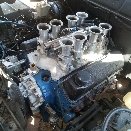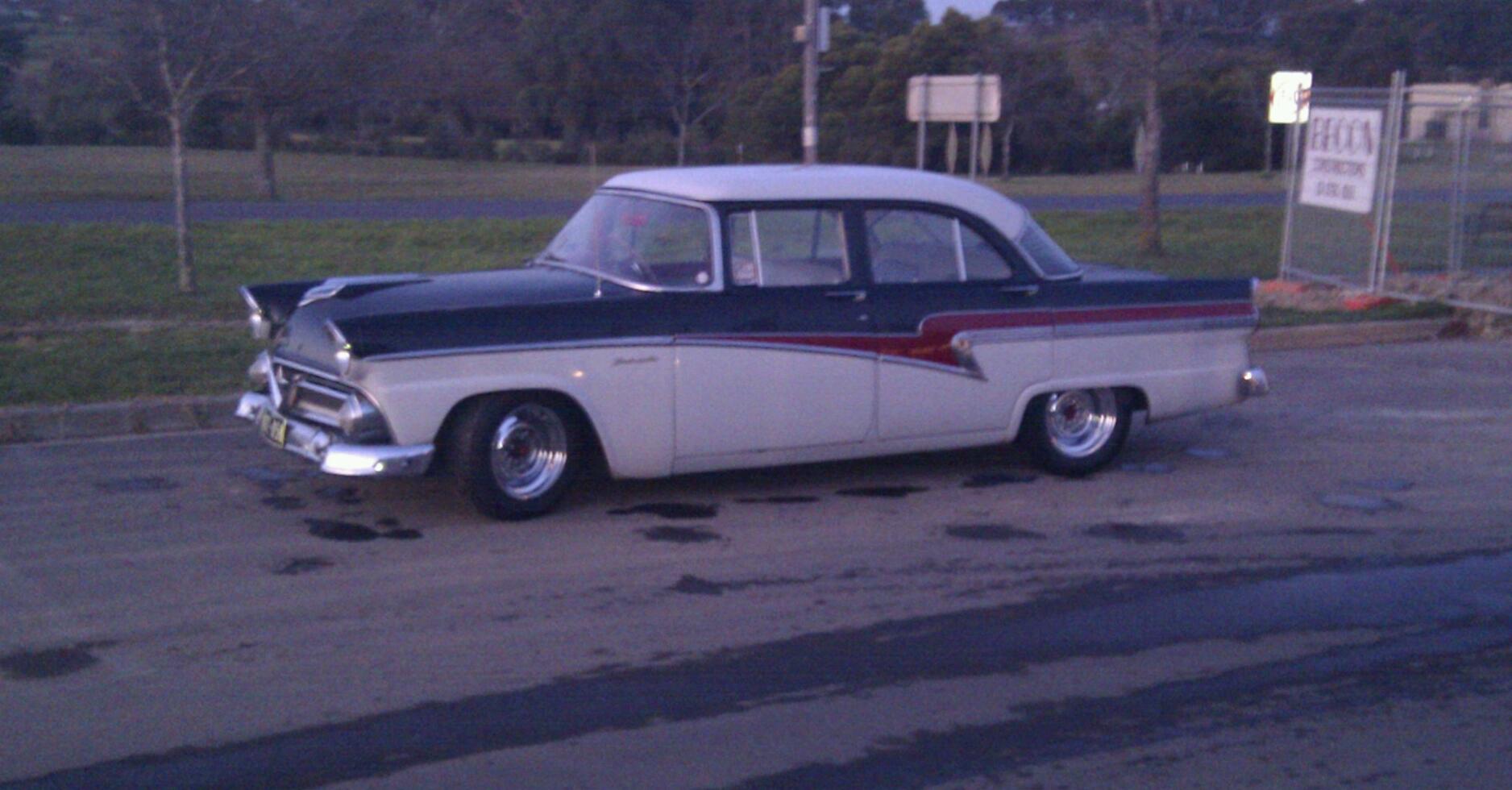-
Content Count
5,476 -
Joined
-
Last visited
-
Days Won
66
Content Type
Profiles
Forums
Calendar
Everything posted by Thom
-

Flow differences between 2V Pre Xflow and Crossflow head.
Thom replied to Stumps's topic in 6 Cylinder Tech
As far as 6 cylinders go I've always compared pre crossflows to windsors and crossflows to Cleveland's, pre crossflows have a smaller port and velocity is your friend, crossflows have a larger more efficient port that responds better to camshaft changes so they are easier to make power out of than a pre crossflow, if you look up classic inlines from the usa they make an alloy version of our 2v heads, they might be able to refer you to a list of cam specs that work in pre xflow's -
If you pull the starter off you can get to the converter bolts
-
Ok so a few people have been chasing info on 4.0ls lately, so over some period of Time I will start posting what I know about 4.0ls as I have played with them for years , this first post is taken directly from a post i made in ph351's thread earlier today,<br /> Ef and early El are the same, late El.used a Au style head and crank, without the longer con rods (if you see an El engine with the prefix wr2axxx cat into it it's an Au style head with 1.8:1 ratio rockers compared to the earlier 2:1 ratio) and the camshafts don't interchange between the two ratios, Ef or El cam be set up for a distributor or coil packs (ea- can also be setup for coil packs but it requires a Ef/El timing cover, also to change from v belts to sepentine belt requires Ef/El timing cover and balancer *note v belts cannot be used with a Ef/El timing cover with stock brackets) pre Au: ea's have the strongest rods, ef's have the best crank (12 counterweights compared to 8 on all other e series) Ef/El blocks are better as they have oil restrictors in the top of the block to prevent to much oil in the head at high rpm (makes for more stable valve train above 4000rpm) ea cam is the biggest for made for a 4.0l (except xg xr6 but good luck finding one) and cannot be used on a Au without custom rockers, xr6 head use standard intake valves with a larger exhaust valve, they were also a different casting from a standard head with similar intake Ports but a much better exhaust port (the best xr6 heads to get have the casting no 93dt and 94Dt, the best of the non xr6 heads have the casting 94da). Au egas engines use better crank and rods than a standard petrol engine (also slightly higher comp, and an Ef xr6 head on an Au egas short nets 10:1 comp) Au engines can take a BA turbo crank and rods without machine work, Au rods are longer than e series with a hypertectic pistons (same advantage as using 3.3 rods in a 4.1 or 302 rods in a 351) a really nice Combo (what some of you will remember I had in my xh) is Au egas short motor, Ef xr6 head, ea cam, El intake with a set of extractors and a tune made 178 rwkw for less than $600<br /><br />
-
Dean pretty much has it, as far as the perches go there's only two different widths, xk-xp and xr to el, overall widths are different with xk-xp being the narrowest, then xr-xy, xa-el (there are some minor differences differences in widths but its less than 8mm and that's main due to the differences between drum and disc brakes) and au-fgx being the widest
-
You may as well just pull it apart, with that much variation it's not going to be fixed without at least the head coming off so you'd as well do it to know what your up against
-

Anyone know the process for reading codes from an au series 3?
Thom replied to XF EDDIE's topic in AU HEY YOU Q&A and general info series 1,2 and 3
I use a elm327 with the forscan lite app, it's sometimes painful to get connected to au's but once you do its very useful for diagnostics, ba-fgx work pretty well with it though -
You are correct, I probably should have spell checked
-
Yes it will run hot if you spin the water pump backwards, the design of the impeller and timing cover are both to suit the reverse rotation water pump and will cavitate the water rather than pump when spun backwards, to go to standard rotation you need a pre 86 timing cover, water pump and balancer (balancer needs to be 58ounce imbalance as you have a roller cam engine, if you use a 28ounce early balancer then engine will vibrate and possibly damage the crank, you also have to use a flywheel or flex plate to suit the roller cam engine, 1986 was when the 5.0l went to 58ounce balancer and flywheel/flexplate) the early timing cover, water pump and balancer also means you will need an early alternator bracket, be aware the v belt setup makes a windsor longer than the serpentine setup but that's not a problem in an early falcon
-
Rod bends and twists, valve pocket is no longer below valve, flat of the piston hits a valve and bends it
-
Sounds like it's autopsy time, if the gauge is correct, it means that every cylinder has damage, you won't know without pulling the head off or using a bore scope to assess what went wrong, but if I were a betting man I would say you have more than your fair share of bent rods and valves, and if it is really that bad you may be better of financially to just swap the whole engine
-
If its winding over slow that's a good indication of bent things, unfortunately you won't know what you need to replace until you do a bit more investigation, a leak down test will show if the cylinders are still sealing, but if you've got to pull the head off anyway to change rods+ whatever else is damaged you may as well inspect the valvetrain while it's off
-
Compression test will show if the engine is mechanically damaged, all cylinders within 5-8% of the same reading should still run smoothly, a bent rod or valves will show lower compression on that cylinder, cylinder walls can crack from hydrolocking but you would most likely bend rods firts (and possibly damaged the skirt on a few pistons if the rod hes bent far enough to let the piston hit the crank, alternatively if the rod twisted it could have bent far enough the valve reliefs dont line up any more, in that case you would have bent valves too) and if the cylinder wall was cracked you would have water in the sump, main bearings will be totally fine unless you've managed to bend the crank but it would probably not run if you managed to do that, e series rods are shorter than au-fgx except el hybrid engines they are the same length as au-fgx, the bigger problem for swapping rods on anything but a factory turbo 4.0 is they use a press fit gudgeon pin and are quite difficult to change without the proper equipment,.you also can't put sohc pistons in a barra as the valve reliefs are in the wrong position for the barra head
-
Speedo sensor, gearshift indicator (sometimes referred to as neutral safety switch) and wiring loom, only external, internal wiring doesn't need to be changed
-
All au trans will be a straight bolt in, just make sure you use the electronics from the car as one of the years has a different gear position indicator and I can't remember which one
-
Ea to au btr's are mostly interchangeable, in 6 cylinder cars with another 6 cylinder btr (some v8's had sports shift like ed sprint, el gt, au ts50 etc) to use an earlier btr in an au it is recommended to fit the au bellhousing to the e series transmission (straight swap make sure you get the converter re seated correctly), the e series bellhousing wilbolt to the au engine but it won't bolt to the sump, you'll need to use the au speed sensor, neutral safety switch and wiring, ba an later btr's can't be used in a ea-au (except maybe column shift ute transmissions but im not certain on that one) as they don't physically have shift positions for 1st to 3rd and are setup to run with the "sports shift" shifter, also unless it is a ute transmission it won't have a mount for the speed sensor (without it the transmission won't shift) as ba to fgx (except ba utes) all came standard with abs and use the abs sensors to tell the ecu how fast the car is going for controlling shift points
-
The change in 4.0l happend in mid 98' pre mid 98 4.0 will have a 4E---- or ---DT if tickford number cast into components (easiest ones to pick are cylinder head, timing cover block etc) and will have early style valvetrain (2.1 rocker ratio straight valve springs and lager valve spring retainers) the bottom end will also have crossflow sized main bearings and shorter con rods (than au through barra) late 98 (known as hybrid in el) through au will have a casting numbers starting with WR2A---, the cylinder head has 1.8:1 rocker ratio, beehive valve springs smaller valve stems and smaller valve spring retainers, the bottom end has larger main journal's, longer con rods, a girdle and in au will have an aluminium sump with the main caps cross bolted to the sump, the el hybrid engines are essentially an au engine with a tin sump, xh may have got the update later than the sedans did as xh production happened nearly a full year into au production
-

Crossflow Borg Warner Starter Slipping, Grinding and Dying
Thom replied to Harrison Kotrolos's topic in Crossflow
Do you have the sandwich plate between the block and the bellhousing, if you don't the starter spacing and position will be incorrect, if you are after a cheap hi torque starter anything from ea to bf falcon will fit crossflow -
Xg are different to xf, but you still need an aftermarket sway bar for au 4.0 or barra, AFAIK tuff mounts are the only ones currently doing aftermarket sway bars, like Dean said its a conversion one, if you wanted something heavier you'd probably have to have it made, On the rear you can use a sway bar to suit xd
-
I've put a couple of hundred au head gaskets on e series falcons (always good to source au spec bolts too), I've always had the head skimmed and just cleaned the block really well with scrapers and an oil stone, as long as the block is flat it will hold up for more than a couple of 100,000ks, its funny most ea to ed head gasket failures I've seen were caused the head gasket failing or corrosion in the head, 7 out of 10 ef/el failures were a broken bolt on cylinder 2 or 5, usually exhaust side
-
Using a 6 cylinder t5 will mean you have to get a crs bellhousing as the 6 cylinder t5 has a different length input shaft to a v8 one, the diff will be fine and the t5 will hold up reasonably well as long as you don't abuse it ( when I was a p plater I broke many of them with a warmed up 4.0l but they were pretty well abused)
-
No, do not use oil flush it will cause the same problems dumping kerosene in the sump would, the goal is to clean the engine gently and slowly, anything that rapidly speeds that process up is what causes problems, the only safe way to clean an engine fast is to dissemble it
-
Safest way to clean it if there's no metal in the filter is to use a higher detergent oil (like a diesel oil) and do 4 or 5 sub 1500km oil changes, it won't make the engine spotless inside but it will clean gradually and shouldn't dislodge anything big enough to cause damage, flushing fresh oil through the engine before firing it up with the new cam won't hurt anything and is a pretty good idea, make sure you use plenty of assembly/ break in lube on the cam and lifters when you install them
-
Flushing the sludge/ metal from the cam & lifters without pulling the sump/ cylinder head to clean out all the oil galleries and oil pump/ pickup will most likely be a death sentence for that engine, you can guarantee you will loosen and flush a large percentage of the gunk in the engine, but that's not the problem, it's what gets left behind that is now free to roam the engine until finds a nice oil gallery or oil pump pick up or oil return to plug up and cut off the oil supply to that area of the engine. Also if metal has been through the engine the oil pump needs to be inspected as the rotors and oil pressure relief need to be inspected for damage and the pump replaced if they are
-
Xe and xf stock exhaust centre section is supposed to be 2 inch for all models, with carby engines having a 1.75inch tail pipes and efi crossflows having a 2 inch tail pipe, 2.25 works really well for stock to mild crossflows if you want a little bit of noise without it getting annoying
-
It's not the "correct way" to do it but I've fitted one with self tappers before, if you wanted to do it a bit better than that I've used nutserts and then bolted it in




